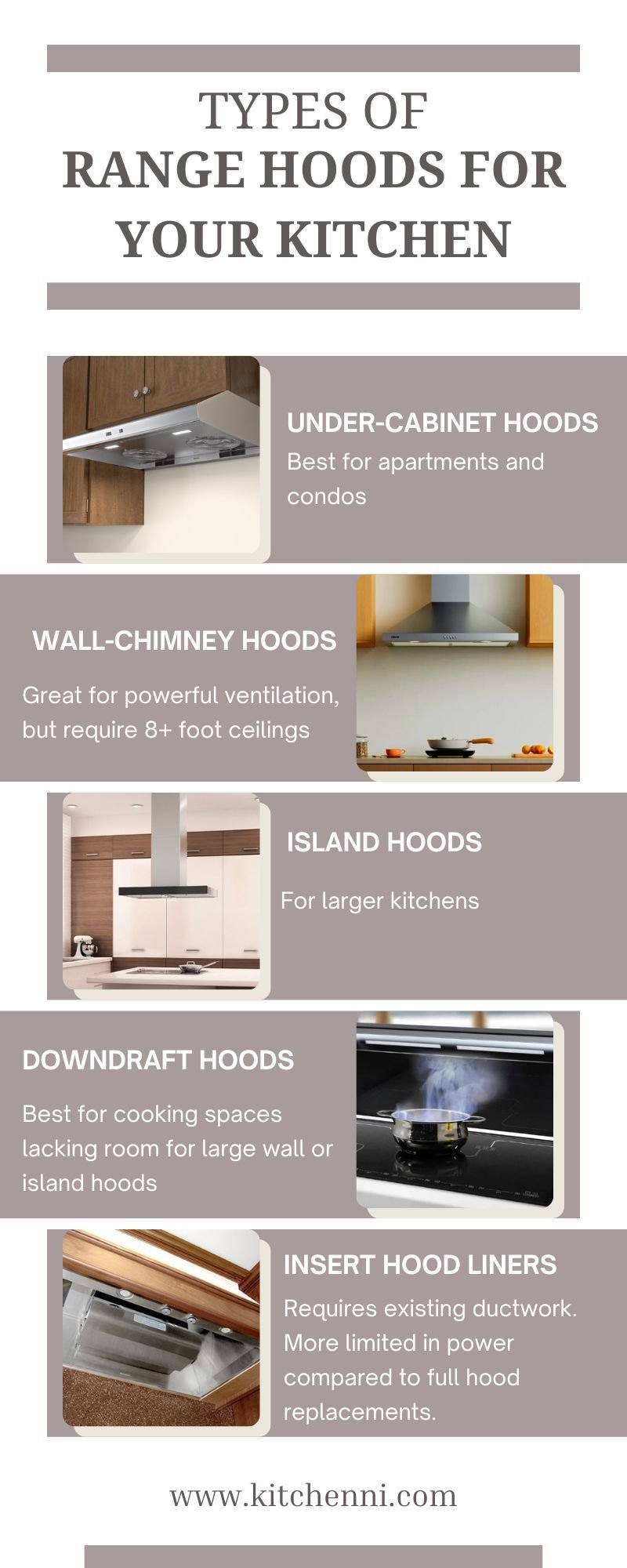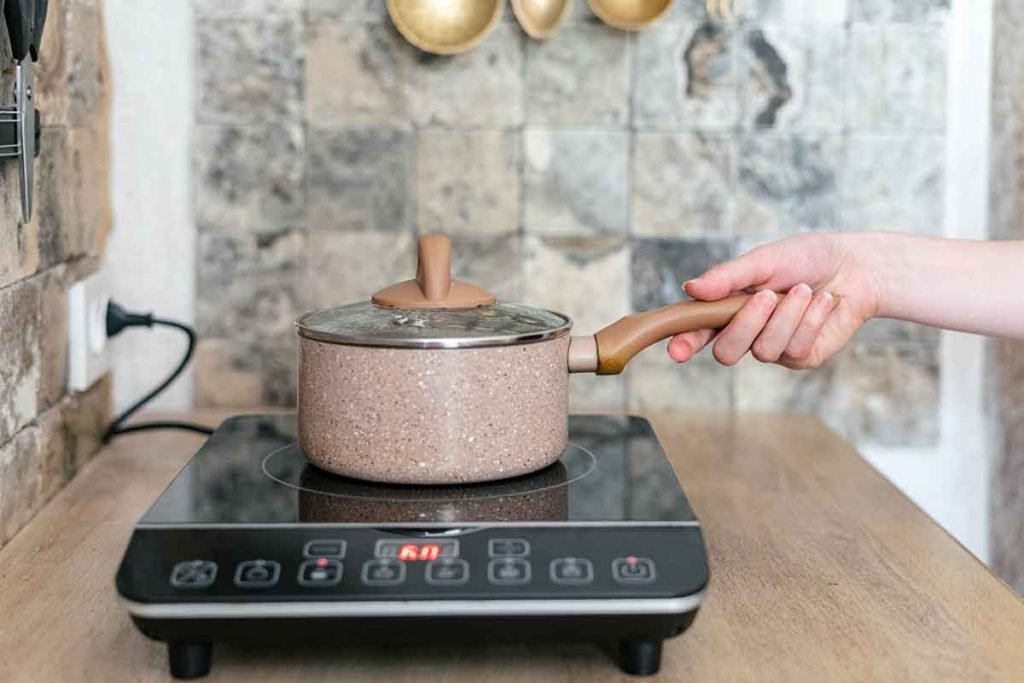We’ve all been there. That familiar smell of last night’s dinner all around the house. The smoke alarm going off while grilling chicken on your induction stove. These are signs your kitchen needs a serious ventilation upgrade.
Range hoods do more than just trap grease on your cabinets – they’re important for removing air pollutants emitted from gas or electric stoves.
1.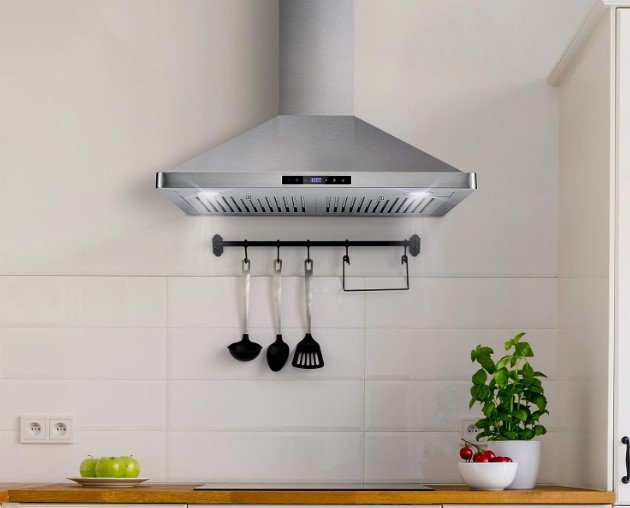 |
COSMO Wall Mount Range Hood |
|
2.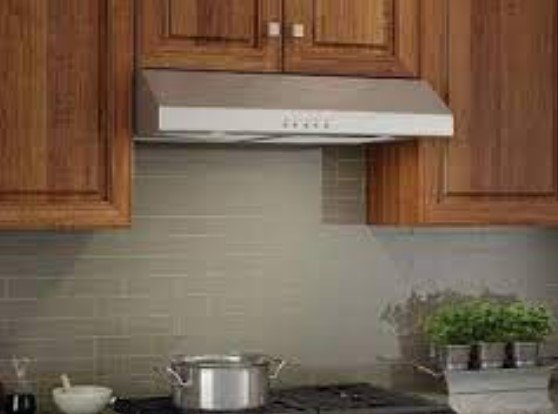 |
Broan-NuTone Under-Cabinet Hood |
|
3.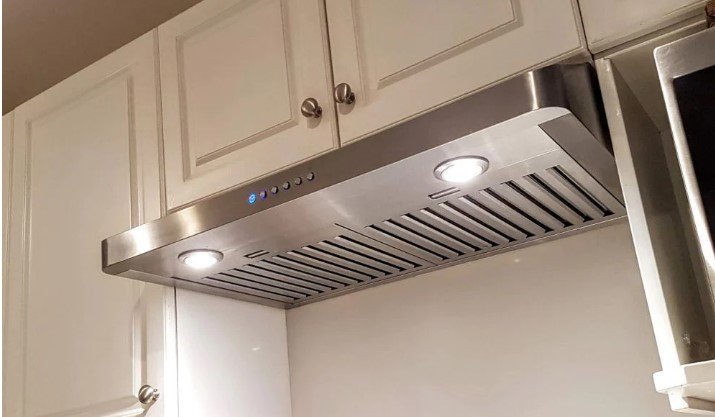 |
Awoco Classic Under Cabinet Hood |
|
4.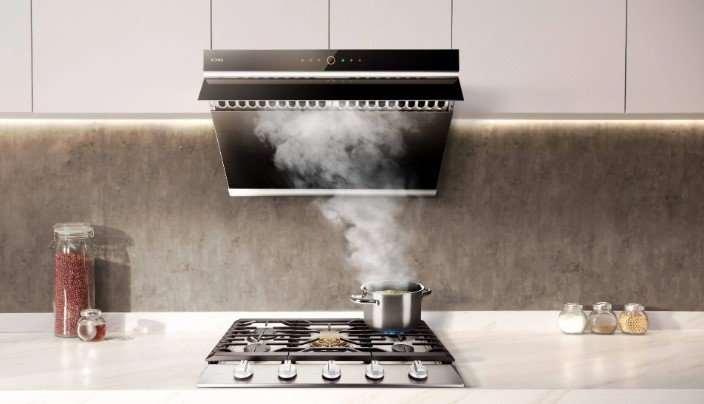 |
FOTILE Under-Cabinet Hood |
|
5.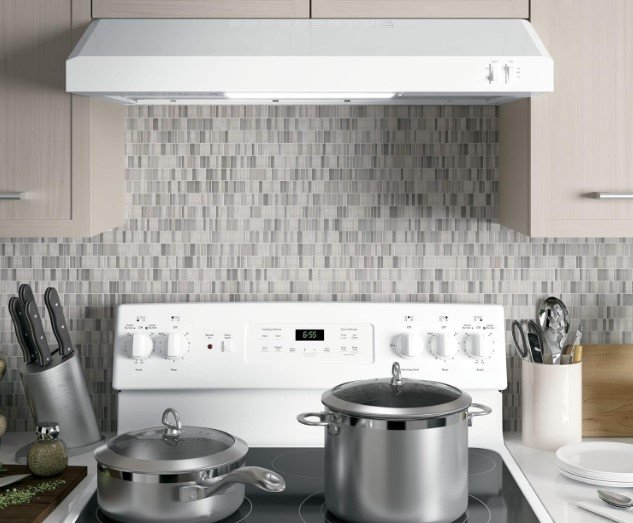 |
GE Under Cabinet Range Hood | |
6.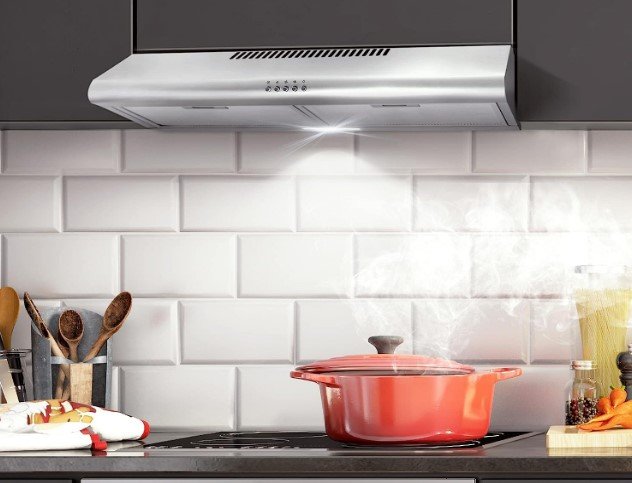 |
COSMO 30 Under Cabinet Range Hood |
Best Vent Hoods for Gas, Electric, and Induction Cooktops – 2023
Cooking causes indoor air pollution levels 2-5x higher than outdoor smog in major cities. Over 4 pounds of grease can accumulate annually on kitchen surfaces without ventilation. A large percentage of homes have air quality issues linked to poor kitchen ventilation
Range hoods are the answer, and that’s what we are going to cover in this article. Here are options I recommend based on real-life experiences and extensive research.
1. COSMO Wall Mount Range Hood

With its six-speed blower, this COSMO range hood is ready to suck up anything your stove spews out. We’re talking grease, smoke, steam – you name it, this sucker’s got the power to grab it.
The auto-cleaning baffle filters are genius too. No need to scrub ’em yourself, just pop ’em in the dishwasher! And with four LED bulbs to spotlight your culinary work, you’ll feel like an Iron Chef in your own kitchen.
At 30 inches wide, the COSMO fits nicely over a standard range or cooktop. While it requires professional ducting, the payoff is way less kitchen grime. Let the power of a real vent hood improve your indoor air – and wow factor!
Pros – What I Liked
- Powerful 600 CFM max airflow handles heavy cooking smoke and odors
- Dishwasher-safe baffle filters provide convenient auto-cleaning
- Bright integrated LED lighting illuminates the whole cooktop
- Durable stainless steel construction for longevity
Cons – What I Didn’t Like
- Professional ducting installation required
- Expensive $300+ price tag
- Noisy at the higher fan settings
- Lacks advanced features like auto-shutoff
2. Broan-NuTone Three-Speed Glacier Under-Cabinet Range Hood

Don’t let its compact size fool ya – the Broan range hood packs some serious cubic feet per minute into a convenient under-cabinet design.
Despite a slim profile, its three-speed fan still cranks an impressive 375 CFM airflow to capture cooking byproducts. The auto-on feature senses when it’s needed too. Who doesn’t love effort-free venting?
While it fits 30-inch cooktops perfectly, the plastic housing does look cheaper than some stainless options. But if you’re tight on space or budget, the Broan provides real vent power without taking over your kitchen.
Pros – What I Liked
- Compact under-cabinet design fits 30-inch cooktops perfectly
- Auto-on senses cooking activity and turns on the fan
- Affordable price
- Slim steel housing allows more headroom
Cons – What I Didn’t Like
- Plastic build looks cheaper than all-metal
- 375 CFM max could be higher
- No LED lighting built-in
- 1-year warranty is short
3. Awoco Classic 6″ High Stainless Steel Under Cabinet Hood

With pro-level 900 CFM airflow, this under-cabinet Awoco hood is equipped to handle even the smokiest kitchen escapades.
It features a powerful 4-speed motor to match ventilation needs from a simmer to an all-out wok sear-fest. Durable stainless construction looks sleek while two halogen lights brightly illuminate the cooking surface.
Reviewers praise how quietly it runs despite the beastly suction. At just $130, it’s an affordable way to get serious vent power in a compact 30-inch cabinet footprint. Your kitchen air will breathe easily!
Pros – What I Liked
- Very powerful max 900 CFM suction
- 4-speed fan with lots of power flexibility
- Durable and attractive stainless housing
- Bright halogen lights for cooktop illumination
Cons – What I Didn’t Like
- Louder at the higher fan speeds
- Requires ducting for maximum effectiveness
- No dishwasher-safe filters
- Exterior shows fingerprints easily
4. FOTILE 30” Under-Cabinet or Wall-Mount Range Hood

This feature-packed under-cabinet hood from FOTILE puts ventilation on autopilot. Hands-free sensors let you turn it on just by waving under the hood – no need to touch messy controls with cooking fingers!
The intelligent tech also automatically adjusts fan speed based on your stove’s needs. The dishwasher-safe filters ensure this hood’s cleaning is fuss-free too.
With its beautiful modern design and smart conveniences, this hood makes venting almost fun. The price reflects the premium features, but they can be worth it for those wanting ventilation innovation.
Pros – What I Liked
- Hands-free and motion-activated controls
- Auto-adjusting fan speeds
- Dishwasher-safe filters for easy cleaning
- Sleek and modern style
Cons – What I Didn’t Like
- Expensive investment
- Less max airflow at 380 CFM
- Ductless mode is not very effective
- Frequent filter cleaning prompts
5. GE Under Cabinet Range Hood

For a basic and budget-friendly under-cabinet model, check out this GE vent hood. Don’t expect lots of bells and whistles, but it gets the job done with solid 200 CFM airflow.
Two halogen lights offer bright illumination of your cooktop, while the removable aluminum mesh filter gives easy access for cleaning. The white finish can match a variety of decor styles.
Is it whisper quiet or packed with features? Nope. But if you just need a straightforward vent solution that fits 30-inch cooktops, it’s tough to beat the low price point of this GE model.
Pros – What I Liked
- Very affordable
- Slim design fits 30-inch cooktops
- Easy-to-clean aluminum mesh filter
- Solid 200 CFM venting capacity
Cons – What I Didn’t Like
- Noisy at higher fan speed
- Only the 2-speed fan lacks variability
- Halogen lights can get hot
- Very basic manual controls
6. COSMO 30 in. Under Cabinet Range Hood

With a space-saving under-cabinet design, this 30-inch COSMO range hood still delivers ample ventilation where you need it. The baffle filters give a slick modern look while capturing greasy buildup.
For smaller kitchens, it’s convertible to recirculating operation too. But the ducted mode maximizes air pollutant removal. With easy controls and bright LED task lighting, it’s a vent hood ready to keep your air fresh.
This is an affordable way to add high-quality range ventilation without a huge hood dominating your decor. Let the COSMO keep odors and smoke right where they belong – outside your home!
Pros – What I Liked
- Convertible ductless or ducted operation
- Slim space-saving cabinet design
- Dishwasher-safe modern baffle filters
- Bright integrated LED lighting
Cons – What I Didn’t Like
- Less powerful at only 170 CFM max
- Fan noise could be disruptive
- Plastic housing feels cheaper
- Lacks smart features like auto shutoff
Honorable Mentions
You loved my picks, right? Before you go, check these two as well. I found them to be stunning and very effective. You might find one that suits your needs better here.
Types of Range Hoods for Your Kitchen
Here are the main range hood designs and what they work best for:
Types of Range Hoods for Your Kitchen Infographic
- Under-Cabinet Hoods – Best for apartments and condos, these compact hoods mount directly under wall cabinets above the stove. Ideal when wall or roof ducting isn’t possible.
- Wall-Chimney Hoods – Also called chimneys or telescopic hoods, these dramatic stainless steel hoods cover the whole stove with the exhaust duct concealed inside the hood itself. Great for powerful ventilation, but require 8+ foot ceilings.
- Island Hoods – For larger kitchens, island range hoods mount directly over islands with cooktops. Usually stainless steel-like chimney hoods and require very high CFMs to vent properly due to the distance from the stove.
- Downdraft Hoods – Downdraft ventilation systems are installed flush with the countertop and pull air downward instead of upward. Best for cooking spaces lacking room for large wall or island hoods. Require installation planning.
- Insert Hood Liners – For a retrofit look, insert hood liner kits can be added inside existing vent openings. Requires existing ductwork. More limited in power compared to full-hood replacements.
How to Choose the Right Range Hood for Your Kitchen
Choosing the ideal range hood for your kitchen space comes down to a few key factors:
Ventilation Power
- CFM (cubic feet per minute) measures a hood’s airflow capability for capturing cooking pollutants.
- For heavy-duty residential stoves, look for a maximum CFM of 600-1200+. Commercial restaurant works may need 1500+ CFM.
- Under-cabinet hoods work best at around 300-400 CFM minimum since they are mounted closer to the cooktop.
- Many non-ducted recirculating hoods do not provide sufficient CFM alone without being paired with exterior ducting.
Size
- The range hood should be equal to or wider than the width of the cooktop/range for full pollutant coverage.
- Standard hoods for 30-36 inch cooktops should provide full-width coverage. High-BTU stoves benefit from 36-42-inch range hoods.
- Overhead mount hoods should be 24-30 inches above the cooking surface for optimal pollutant capture.
- Island mount range hoods should be installed around 42 inches above the cooktop for a comfortable cooking zone while still being low enough to effectively trap emissions.
Features
- Look for multiple fan speeds from low simmer to max grease-cutting power. 4-6 speeds is common.
- Washable metal mesh or baffle filters prevent grease buildup and are easier to maintain than disposable filters.
- Bright LED lighting ensures the cooktop is illuminated evenly for safe cooking. Nighttime use benefits.
- Opt for stainless steel or powder-coated finishes for an attractive, durable, and easy-to-clean hood exterior.
- Sound insulation packages help absorb noisy fan noise for a quieter kitchen environment.
Ducting
- For optimal air cleaning, always choose a ducted range hood that vents pollutants outside rather than a ductless recirculating model.
- Use the largest duct size possible – in the 7-10 inch range – to maximize CFM airflow.
- Keep duct runs as short and straight as possible, avoiding lengthy or angled routes. More duct turns and elbows reduce effective CFM.
Should a Range Hood Be the Same Size as the Cooktop?
A range hood needs to be at least as wide as the cooktop or stove burners to fully capture and contain all cooking pollutants. An undersized hood allows portions of the contaminated airflow to escape unvented into the indoor space.
Ideal overhead range hoods should extend 3-6 inches wider than the cooktop on both sides. For island stove hoods, look for models that overhang the cooking surface by 3-6 inches on all sides to help trap gases.
Without proper sized coverage, your kitchen will be exposed to excess pollutants affecting your health and cleanliness.
How Much CFM Should a Range Hood Have?
Kitchen range hoods should have airflow ratings between 100-400 CFM for adequate ventilation. Look for CFM ratings based on the hood’s max fan setting. Noise levels typically rise with more airflow power. Proper installation with short, straight ducting is key to optimize airflow efficiency.
Let’s take a look at these figures deeper:
| CFM Range | Usage Description |
|---|---|
| 100-150 | Minimum for light cooking. Best for stock hoods included with appliance packages. |
| 200-300 | Suitable for average residential usage with daily cooking. Works for the majority of homes. |
| 300-400 | Best for households that frequently cook pungent or greasy cuisine or use high-BTU stoves. Prevents humidity buildup. |
| 500-1200 | Heavy-duty kitchens with commercial appliances, woks, fryers, etc. Require make-up air system to balance exhaust airflow. |
Common Questions
What is the best CFM for a kitchen range hood?
Look for at least 100 CFM per linear foot of cooktop width. For most 30-36 inch residential ranges, 400-600 CFM provides sufficient ventilation power.
Can you use a bathroom exhaust fan to vent a stove?
No, bathroom fans lack the CFM power and fireproof construction to effectively and safely vent cooking pollutants and heat.
Do range hoods require special wiring?
Range hoods need their own dedicated electrical circuit rated for the required wattage. Consult an electrician if wiring upgrades are needed.
How far should a range hood be mounted from the cooktop?
A: For optimal pollutant capture, install an overhead range hood 24-30 inches above the cooking surface. Hoods 36 inches above or more lose effectiveness.
What reduces a range hood’s CFM rating?
Longer ducting, more duct elbows and turns, smaller duct size, and any obstructions will reduce effective CFM compared to rated maximum airflow.

